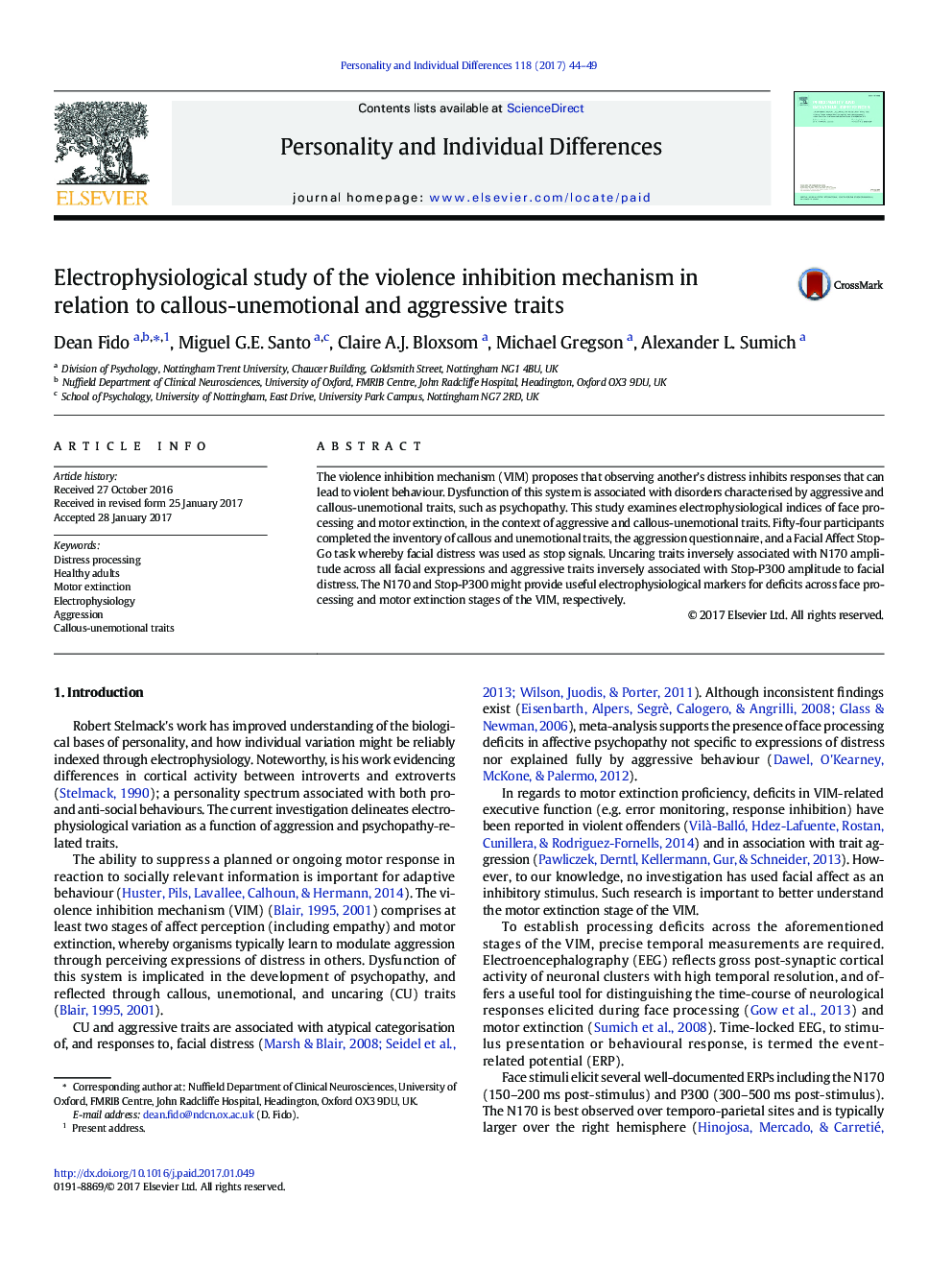| کد مقاله | کد نشریه | سال انتشار | مقاله انگلیسی | نسخه تمام متن |
|---|---|---|---|---|
| 5035567 | 1472000 | 2017 | 6 صفحه PDF | دانلود رایگان |
- Uncaring traits were associated with poorer face processing (N170).
- Physical aggression was associated with poorer motor extinction (Stop-P300).
- Anger-specific N170 augmentation might be a function of task priming.
The violence inhibition mechanism (VIM) proposes that observing another's distress inhibits responses that can lead to violent behaviour. Dysfunction of this system is associated with disorders characterised by aggressive and callous-unemotional traits, such as psychopathy. This study examines electrophysiological indices of face processing and motor extinction, in the context of aggressive and callous-unemotional traits. Fifty-four participants completed the inventory of callous and unemotional traits, the aggression questionnaire, and a Facial Affect Stop-Go task whereby facial distress was used as stop signals. Uncaring traits inversely associated with N170 amplitude across all facial expressions and aggressive traits inversely associated with Stop-P300 amplitude to facial distress. The N170 and Stop-P300 might provide useful electrophysiological markers for deficits across face processing and motor extinction stages of the VIM, respectively.
Journal: Personality and Individual Differences - Volume 118, 1 November 2017, Pages 44-49
